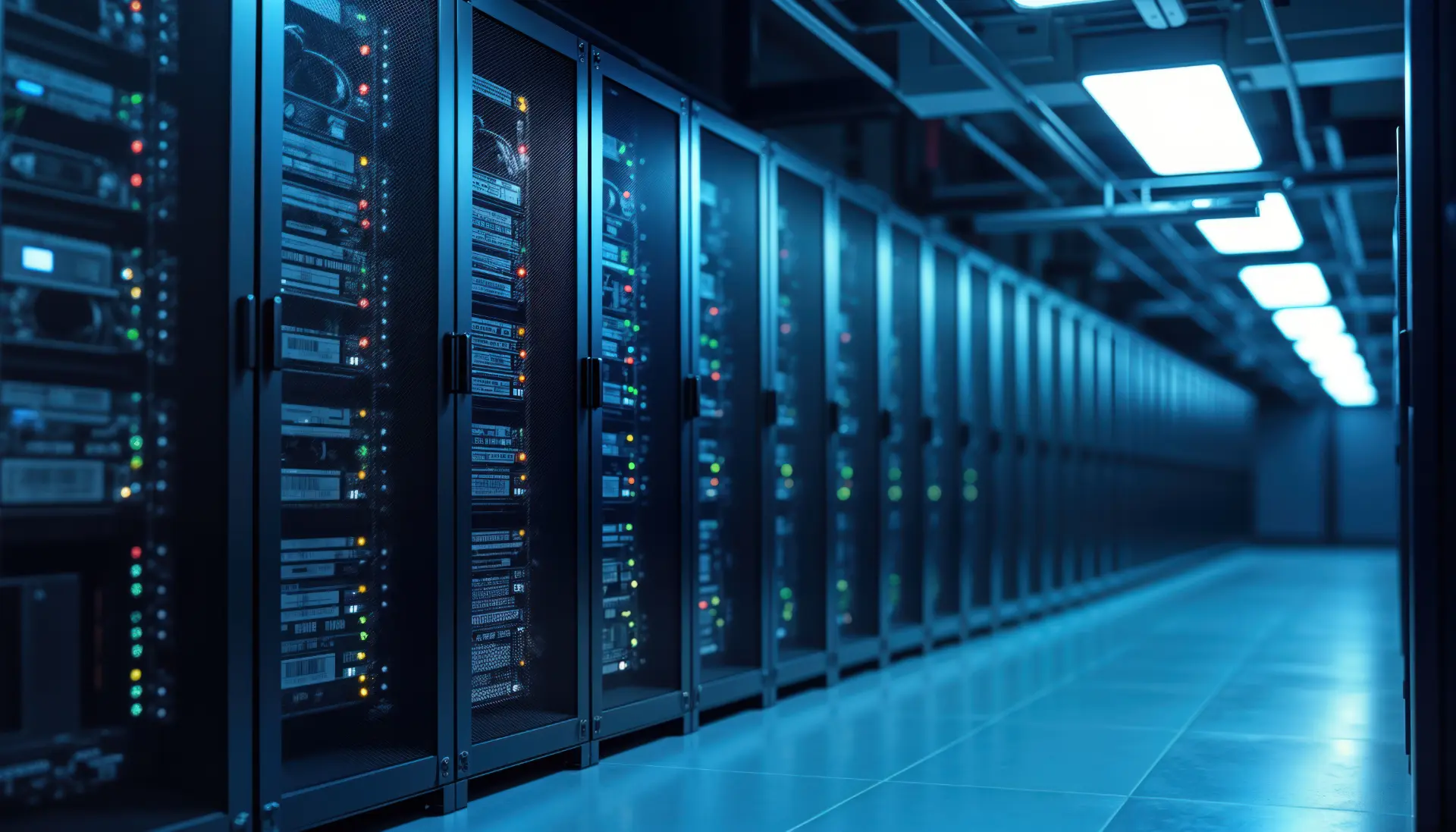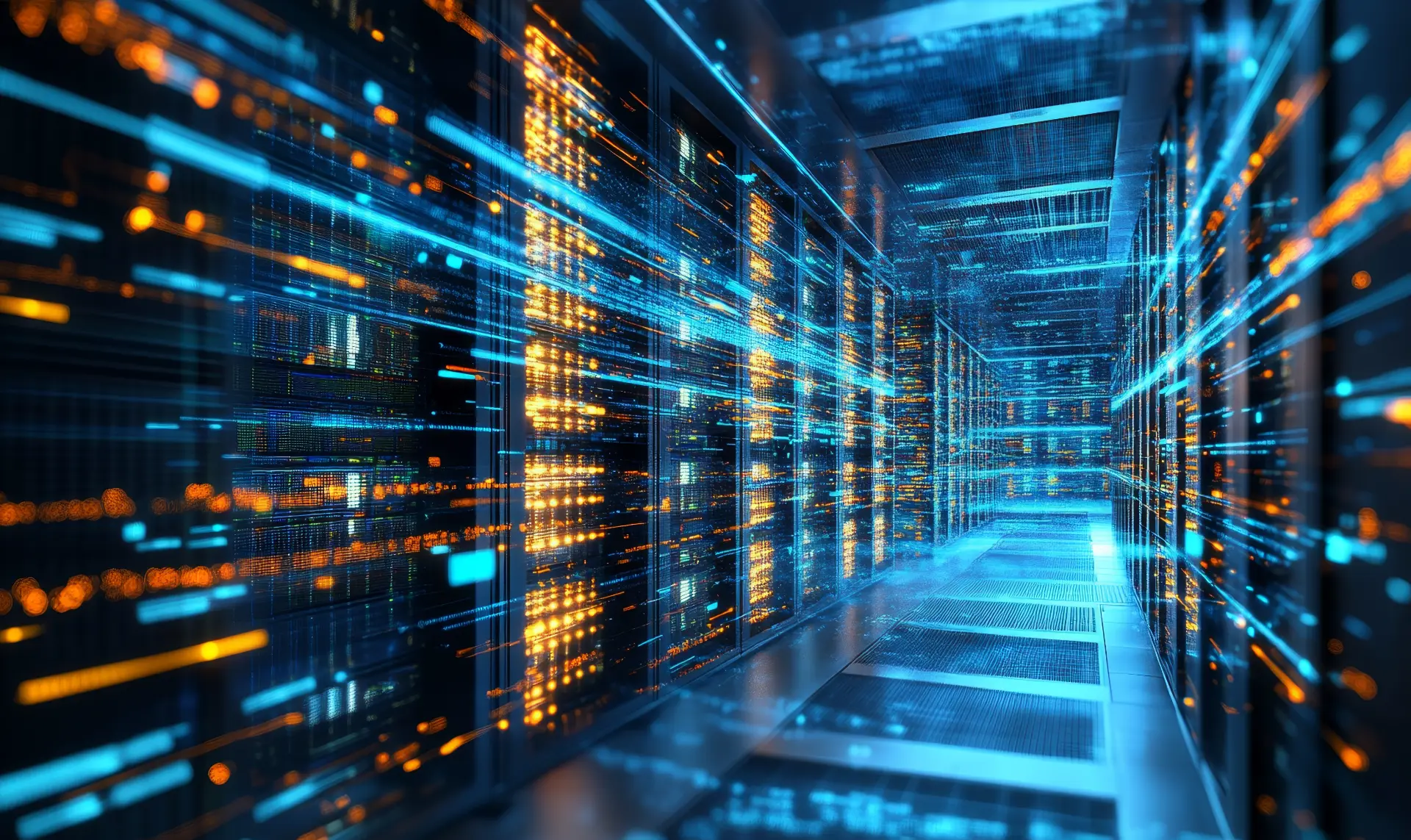Table of content
- What are Data Centers and what are they used for
- Why Data Center security is essential
- Key IT infrastructure components in Data Centers
- How to protect a Data Center: strategies and solutions
- Data center classification: the tier system
- The importance of cloud computing in Data Centers
In this article, we will explore what data centers are, their crucial role in IT infrastructure, and best practices for ensuring their security.
We will also examine the technologies and security solutions necessary to protect corporate data, an essential aspect of data center cyber security.
What are Data Centers and what are they used for
A data center is a facility designed to house a collection of digital infrastructures, such as storage systems, servers, networks, and other critical devices used for data processing and management.
Corporate data centers are the heart of IT operations, managing essential services such as business applications, cloud services, and data analysis.
Data centers can be configured as on-premise facilities, meaning they are physically located within a company, or as cloud-based solutions provided by third parties. Regardless of the configuration, a data center must be designed to ensure continuous operation, high performance, and maximum security.
Why Data Center security is essential
Data center cyber security is crucial for protecting corporate data from threats such as cyberattacks, hardware failures, and natural disasters. From a security perspective, there are two main areas:
- Physical security
Protects the physical infrastructure through security systems such as cameras, biometric access, and 24/7 surveillance.
- Digital security
Focuses on defending against hacker attacks using firewalls, encryption, and network monitoring.
Investing in appropriate security solutions is essential to ensure operational continuity and reduce the risk of data loss.
Key IT infrastructure components in Data Centers
A corporate data center consists of several elements working in synergy to support digital operations. These include:
- Storage systems
For the secure and reliable retention of data.
- Cooling systems
To maintain optimal temperatures and prevent hardware failures.
- Physical infrastructure
Includes servers, cabling, and network devices.
- Security systems
Ensure both physical and digital protection of the data center.
These components make the data center a complex but indispensable structure for modern businesses.
How to protect a Data Center: strategies and solutions
Protecting a data center is a complex challenge that requires a holistic, multi-layered approach. The combination of physical security, advanced technological solutions, and clear operational protocols is essential to ensure business continuity and integrity.
Below, we detail some of the most effective strategies and solutions for securing data centers.
Physical security: the first line of defense
Physical security is fundamental for protecting the infrastructure from unauthorized access or accidental damage. Key measures include:
- Access control
Using advanced systems such as RFID cards, biometric access (fingerprint, iris scan), and PIN codes to restrict entry to authorized personnel only.
- Video surveillance
Installing security cameras with continuous recording to monitor and log activities inside and outside the data center.
- Perimeter protection
Physical barriers, fences, and intrusion detection systems help prevent unauthorized access.
- Emergency plans
Regularly preparing and testing evacuation procedures and responses to events such as fires, floods, or earthquakes.
The combination of these measures ensures the physical infrastructure is protected from both external and internal threats.
Digital security: defending the data
From a digital standpoint, protecting the information managed in corporate data centers requires the implementation of robust cyber security solutions. Best practices include:
- Firewalls and intrusion detection systems
Essential tools to block external attacks and detect suspicious activity.
- Data encryption
Ensuring data, both in transit and at rest, is encrypted, making it useless in the event of theft.
- Network segmentation
Separating different areas of the network to limit damage in case of a breach.
- Multi-Factor Authentication (MFA)
Requiring multiple verification layers for access to critical systems.
- Continuous monitoring
Using real-time analytics software to detect and mitigate threats before they cause harm.
These practices strengthen data center cyber security, making them more resilient to increasing cyber threats.

Implementing a disaster recovery plan
Unexpected events such as technical failures, fires, or cyberattacks can cause severe disruptions to business operations. Therefore, every data center must have a well-defined disaster recovery plan. Key components include:
- Regular backups
Saving copies of critical data on separate systems, preferably in a remote location.
- System replication
Maintaining an exact copy of the IT infrastructure at another site to ensure operational continuity.
- Periodic testing
Simulating emergency scenarios to verify the plan’s effectiveness.
- Resource prioritization
Identifying which systems and applications should be restored first in an emergency.
A well-planned and regularly updated disaster recovery plan minimizes downtime and protects corporate data.
Cooling systems and energy management
Temperature management is critical to a data center’s functionality. Overheating can lead to irreversible hardware failures. Strategies for effective temperature and power management include:
- Advanced cooling systems
Using technologies such as water cooling or compressed air systems to maintain a stable environment.
- Temperature monitoring
Installing sensors that alert staff in case of overheating.
- Power redundancy
Having backup generators and Uninterruptible Power Supply (UPS) systems to ensure constant power in case of outages.
These measures protect the physical components of the data center and ensure operational continuity.
Staff training
Even the best security system can be compromised by human error. Employee training is essential to ensure that everyone understands security procedures and technologies. Training topics should include:
- Recognizing and responding to cyber threats;
- Understanding emergency procedures;
- Proper use of access control systems.
Awareness and preparation among personnel contribute to stronger data center security.
Cloud and hybrid solutions
Many corporate data centers are adopting cloud computing or hybrid configurations. This approach allows businesses to:
- Scale resources according to needs;
- Improve operational flexibility;
- Reduce costs associated with maintaining physical infrastructure.
However, it is crucial to implement security measures for cloud services as well, ensuring that providers meet high data protection standards.
Audits and regulatory compliance
A frequently overlooked yet essential aspect is ensuring the data center complies with local and international data protection regulations. Conducting regular security audits helps identify and address vulnerabilities.
Data center classification: the tier system
A critical aspect of data center design is its classification according to the tier system. This scale defines reliability and resilience levels, with Tier 1 representing the most basic level and Tier 4 offering near 100% operational uptime.
The importance of cloud computing in Data Centers
With the rise of cloud services, many companies integrate cloud computing into their operations. This choice allows for greater scalability and cost reduction while requiring a strong focus on security and resource management.
Conclusions
Data centers are at the core of modern IT infrastructures and play a crucial role in managing corporate data. To protect them, businesses must invest in advanced technologies and adopt effective cyber security practices.
As technology continues to evolve, ensuring data center security remains a key challenge for companies across all industries.
Questions and answers
- What are data centers?
Facilities dedicated to managing and storing corporate data. - What are data centers used for?
They manage applications, data, and critical business services. - What are the main risks?
Physical threats, cyberattacks, and hardware failures. - How can data center physical security be ensured?
Through access control systems, surveillance, and perimeter protection. - What is cloud computing in data centers?
A solution to scale resources and reduce costs by leveraging cloud services. - What is the role of disaster recovery in data centers?
It allows for quick restoration of data and operations in emergencies. - What are data center tiers?
A classification defining a data center’s reliability level. - What are the main components of a data center?
Servers, storage systems, cooling, and physical infrastructure. - How is a data center monitored?
Using continuous monitoring tools and real-time analysis. - What is the difference between on-premise and cloud data centers?
On-premise data centers are local, while cloud ones are hosted by third parties.

